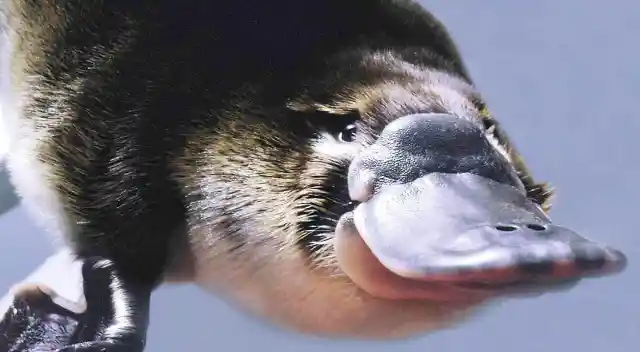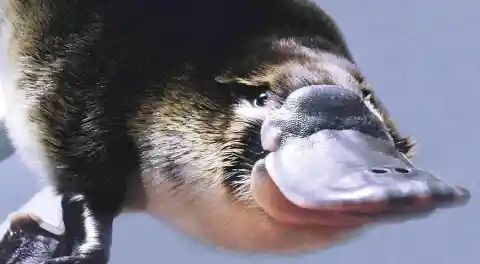

If there was ever an appropriate occasion to apply the phrase “freak of nature” it would have to be in reference to the platypus. The platypus or, ornithorhynchus anatinus, is one of those WTF animals that seemed to be manifested from the imagination of a four year old. With a body like an otter, a bill and feet like a duck, and a tail like a beaver, these animals are either an example of nature’s awesomeness or its sense of humor. Maybe it’s a little bit of both.
Number One: They lay eggs. One characteristic of almost all mammals is that they give birth to live progeny. Unless you are a platypus, that is. Along with monotremes, platypuses are the only mammals known to lay eggs.
Number Two: They don’t have nipples. Even though the females nourish their young with the milk produced by their mammary glands, the baby platy-pups don’t drink from their mother’s teats. That’s because platypuses aren’t born with nipples to begin with. To get their fill, the pups lap up their mother’s milk as it is secreted from her areolae like sweat. Sounds messy.
Number Three: They are venomous. Male platypuses have a poisonous spur on each hind foot that looks like just another claw. The venom that these spurs deliver is most potent around mating season, which leads scientists to the belief that they are used against male competition.
Number Four: They Are Pretty innovative. The platypus is known to intentionally scoop up gravel from the bottoms of rivers along with its prey of larvae, worms, small fish and snails. Why? With duck bills that leave no room for teeth, the platypuses use the gravel to help grind their meal.
Number Five: They don’t have stomachs. Instead of a stomach, a platypus’ food passes from its esophagus to its intestine with no holding place in between.
Number Six: They growl. “Phineas and Ferb” got their facts right. Platypuses sound exactly like Perry the Platypus does on the popular Disney cartoon. Scientists postulate that platypuses growl to defend their territory.
Number Seven: They don’t use any of the five senses to hunt. In lieu of five senses, platypuses rely on their electromagnetic detection abilities to map out a representation of their underwater environment in order to target underwater prey.